By T.J.S. George
What a tragedy Sri Lanka has become. All school examinations have been cancelled because there is no paper. There is no paper because there is no money to import it. There is no fuel for cooking. A thousand bakeries are closed. Many power plants have shut down leading to extensive power cuts. Some 50,000 gas cylinders used to be supplied in a month. It’s down to 2,000 now; the impact on households can be imagined. One citizen put it bluntly: “We can’t even afford a headache; there’s no medicine.”
Sri Lanka was a fun country not long ago. People liked to enjoy life, and most of them could. Lanka was also dreaded by many countries because when Muttiah Muralitharan started bowling, shivers went down the spines of his targeted batsmen. Sanath Jayasuriya invented new techniques of hard-hitting the ball, which became the standard for all ambitious players.
Cherished names from that era of Lankan glory are still remembered with pride. Sirimavo Bandaranaike and Chandrika Kumaratunga proved the power of women in a field usually seen as the preserve of men. Ranil Wikremesinghe and Ranasinghe Premadasa fought democracy’s wars regardless of the costs. Sarath Fonseka became a Field Marshal, the country’s first.
This great and wonderful country turned into a tragedy for reasons not noticed when it happened. Soon enough the reason became obvious: A proud and creative country had become the private preserve of a single family, the Rajapaksas.
How this happened will one day be chronicled with academic clarity. What we know now is that Mahinda Rajapaksa was elected Prime Minister in 2004, became President in 2005 and stayed in that chair for ten long years. That stint in power was used by his brother Gotabaya, a scheming politician, to change the system in favour of his family. He succeeded so well that he became known even among his supporters as “The Terminator.”
How many people were terminated in that period is not yet public knowledge, but there were reports of people being picked up by the Police, never to be seen again. Gotabaya became famous for his short temper and widespread corruption, but no one would say a word against him.
In 2019, he became President of the country, enjoying special privileges and immunity against legal proceedings. Basil Rajapaksa, considered the economic genius of the family, ensured that Government contracts fetched him commissions suiting his status. He became known as “Mr. Ten Percent.” That showed his modesty because he could easily have become “Mr. Twenty-five Percent.” He faced many prosecutions but they meant nothing because (a) no charge was proved against him, and (b) he had dual citizenship, Sri Lankan and American.
The family’s influence kept growing. Namal Rajapaksa, son of Mahinda, entered Parliament when he was only 24. He held no Ministerial post, but his backing was essential for any project to go ahead in the country. He faced charges of money laundering, but he rolled on from one successful post to another. Mahinda is said to be grooming him to become President of the country.
At the political level, it has been a story of opportunism all the way. For a long time, Sri Lanka tried not to depend on India. This was when China took unusual interest in the island’s affairs. They built a major port at Hambantota, a strategic point along the east-west shipping routes. This was in addition to a new port developed in Colombo itself. Sri Lankan Parliament passed laws that turned 600 acres near the existing Colombo Port into Chinese sovereign territory.
For some reason, the weather changed. China seemed uninterested in asserting its rights and Colombo suddenly turned to India for help. A $100 crore loan happened, and was followed by another $100 crore loan. It was explained that the money from India was to ensure imports of day to day necessities that had become locally unavailable — rice, sugar, wheat, medicines. How did such essentials become unavailable? How did corruption go deep enough to devour the country?
Facing a survival crisis, Sri Lankan central bank had printed currency notes in excess of prudent limits. They added up to 1.2 lakh crore in value (about 26,000 crore rupees in Indian money). That does not seem to have solved problems of everyday existence. Where do they go now? Where is China? All we know is where is Mahinda, and Gotabaya, and Basil, and Chamal, the eldest of the brothers, and also Namal, Mahinda’s son. We know where they are today and how well they are doing. But tomorrow?



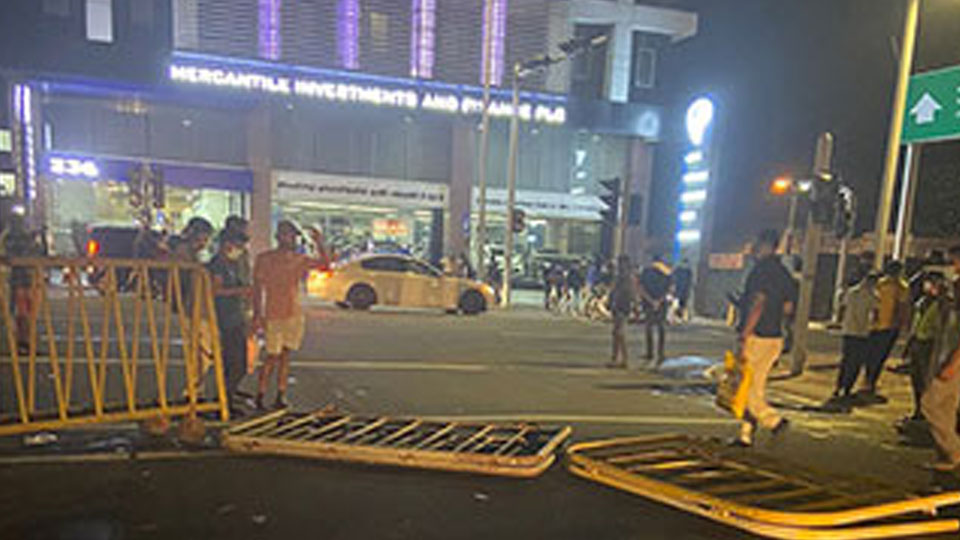
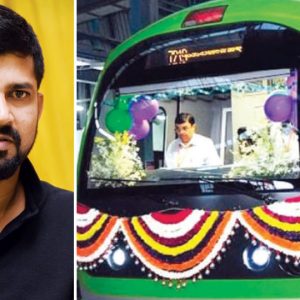
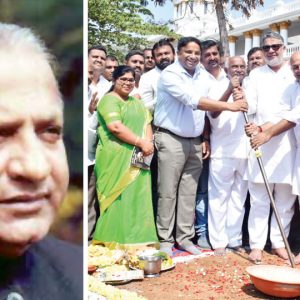
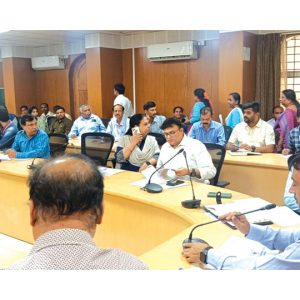
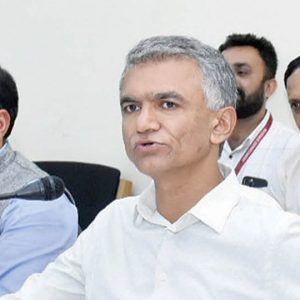
Politicians in SriLanka and India , have one thing common-they nourish nepotism and corruption
When nepotism and corruption operates in a small island like Sri Lanka, which has little else to depend on besides tourism, the result will be devastating. The Chinese have brought forward the destruction. The next will be Nepal.
In this sub continent, the personality cult, which leads to power and then to corruption. Nehru dynasty is not the only example.
In an unfortunate way, Narendra Modi’s abandoning his wife after his marriage, and staying single, has helped him to remain clean as he has no children.
But, his successor which will be Amit Shah, has a meddling son, Jay Shah, operating similar to Sanjay Gandhi, has become rich and powerful using his father’s position already; when his father, Amit Shah becomes the PM, you would see Jay Shah’s influence working very clearly at the Centre and all over India..
BJP, DMK and Samajawadi political dynasties are working at the state level politics and misusing power, gaining wealth disproportionately.
In the case of UP, Akilesh Yadav, who was academically very poor as a student , had to pay the substantive capitation fee to get into then JSS engineering college, but saw politics better suited to his taste. He became the UP CM ,in the footsteps of his father, Mulayam Yadav, the founder of the Samajwadi Party, and a former UP CM.
In Karnataka, You have the added dimension of caste to achieve political power. The Lingaya Yedi, the RSS Cheddi, promoting his MLA son, moustached toad Lingayat Bommai became the CM because he is a Lingayat and also the son of Bommai senior, the CM briefly years ago; Then there is the obvious example of Gowda Deve Gowda , his dynasty including son and grandson,all in polics; the son-in-law not in politics, but nevertheless, flourishing thanks to who he is married to!
The stark example of Karunanidhi the DMK ex-CM of Tamil Nadu grooming his son MK Stalin, now the Tamil Nadu CM, whose son already a MLA in turn is likely to succeed him too .
All the above villains have become filthy rich, thanks to corruption.
Corruption has become santized in India, is accepted as the norm in politics, institutions, administration and the society. Corruption has become a way of life in independent India.
.India will be sunk eventually, not by corruption, by its massive population explosion.
Politicians in SriLanka and India , have one thing common-they nourish nepotism and corruption
When nepotism and corruption operates in a small island like Sri Lanka, which has little else to depend on besides tourism, the result will be devastating. The Chinese have brought forward the destruction. The next will be Nepal.
In this sub continent, the personality cult, which leads to power and then to corruption. Nehru dynasty is not the only example.
In an unfortunate way, Narendra Modi’s abandoning his wife after his marriage, and staying single, has helped him to remain clean as he has no children.
But, his successor which will be Amit Shah, has a meddling son, Jay Shah, operating similar to Sanjay Gandhi, has become rich and powerful using his father’s position already; when his father, Amit Shah becomes the PM, you would see Jay Shah’s influence working very clearly at the Centre and all over India..
BJP, DMK and Samajawadi political dynasties are working at the state level politics and misusing power, gaining wealth disproportionately.
In the case of UP, Akilesh Yadav, who was academically very poor as a student , had to pay the substantive capitation fee to get into then JSS engineering college, but saw politics better suited to his taste. He became the UP CM ,in the footsteps of his father, Mulayam Yadav, the founder of the Samajwadi Party, and a former UP CM.
In Karnataka, You have the added dimension of caste to achieve political power. The Lingaya Yedi, the RSS Cheddi, promoting his MLA son, moustached toad Lingayat Bommai became the CM because he is a Lingayat and also the son of Bommai senior, the CM briefly years ago; Then there is the obvious example of Gowda Deve Gowda , his dynasty including son and grandson,all in polics; the son-in-law not in politics, but nevertheless, flourishing thanks to who he is married to!
The stark example of Karunanidhi the DMK ex-CM of Tamil Nadu grooming his son MK Stalin, now the Tamil Nadu CM, whose son already a MLA in turn is likely to succeed him too .
All the above villains have become filthy rich, thanks to corruption.
Corruption has become santized in India, is accepted as the norm in politics, institutions, administration and the society. Corruption has become a way of life in independent India.
.India will be sunk eventually, not by corruption, by its massive population explosion.
Mr george in the subject you have chosen to write about, unfortunately you cannot blame Modi or the RSS, which must be very uncomfortable for you !!!!
@H Your post suggests your massive ignorance on the subject.
Sequence of events that lead to disaster.
Lankans voted for Rajapakshas knowing very well what they did in the past, including corruption, selling out national assets to China, dynastic politics and all.
They still voted for them because Rajapakshas promised things they could not refuse.
1. Their GST, called VAT, on all products was reduced to 8%, thus making everything cheaper in one stroke. (It also killed the govt revenue). People loved things getting cheaper.
2. The minimum Income Tax threshold was changed from 5 Lakhs per annum to 30 Lakhs! Very few earned more than 30L!
A very large part of the population became tax exempt. This was very popular among the salaried class, but the revenue for the government got dried up …
3. For those with income over 30 Lakhs, the upper ceiling of maximum personal tax of 15% was created, so no one paid over 15% tax. For comparison, it is around 42% in India and between 40 to 60% in many developed countries.
4. Corporate tax was promised to be reduced to 14%!
Every corporate supported and funded Rajapakshas.
5. They abolished seven other taxes, including a 2% nation building tax paid by businesses.
6. Zero tax for many industries like IT services and hotels that serve tourists etc.
7. Various taxes imposed on religious institutions were promised to be scrapped. Srilanka’s powerful Buddhist Monks campaigned during election times to vote for Rajpakshas.
8. Individuals and companies engaged in agriculture, fisheries and livestock farming were exempted from any taxes for the next 5 years.
9. The daily minimum wages of tea workers were raised to Rs.1000. Instantly got all their votes.
10. Minimum salary for private company employees was fixed at Rs12500 per month. Every low income family loved it.
11. Tax on retirement gratuity was reduced from 24% to 15%. All senior citizens loved it.
12. Pensions were awarded to state bank employees who were not eligible. Those employees loved it.
13. 15% VAT on apartments was scrapped. Young home buyers and construction industry loved it.
14. Fuel prices were kept artificially low. They bought Petrol from India, and still sold it at prices lower than India. No tax revenue there either.
15. In a hurry to make Srilanka a developed nation, they went on an infrastructure building spree financed by Chinese loans. Infrastructure that they could not be used for productivity. Those projects became white elephants.
Rajapakshas (unlike Indian politicians) delivered on these promises, promptly, as soon as they got into office. They bankrupted the country in the process.
In trying to get so many things for free, Sri Lankans actually ended up paying much higher prices.
Now, Srilankan rupee trades for Rs 310 per dollar. For an import-dependent country, this means everyone’s savings got reduced by the same ratio. Their buying power decreased. Their salary did not increase in proportion to the inflation. Thus everyone actually ended up with smaller incomes.
Besides monetary issues, it destroyed the country, has caused lot of human suffering with 15 hour powercuts, lack of food, civil war and political instability.
@Karunakaran – This looks like the AAP model ! Not sure who copied whom, but it is scary!! You cant even hold them for not fullfilling the promises but human greed of common man is used for destroying them
@Karunakaran
Your lidt of deliveries by the Sri Lankan government did not mean the country had to go bankrupt. It did mean that the country was not producing enough wealth to sustain them. But again, the dynastical rule, very familiar to India, and the corruption at the top-politiians and officials, meant that they lived for themselves.
It was a rich country in terms of their tourism, which India could never match. They did not exploit it. SriLanka with its small size and population and the opportunity to move in a different direction than India, like Singapore, was the way forward,. This did not happen.
Indian rupee value is no better: 1 quintal oof rice rupees 5000, and one litre of edible oil rupees 200, do indicate the worthless value of rupees, hence the graft currency in India is US Dollars.
India will dink , in another way: its massive population explosion.
@Karunakaran
Your lidt of deliveries by the Sri Lankan government did not mean the country had to go bankrupt. It did mean that the country was not producing enough wealth to sustain them. But again, the dynastical rule, very familiar to India, and the corruption at the top-politiians and officials, meant that they lived for themselves.
It was a rich country in terms of their tourism, which India could never match. They did not exploit it. SriLanka with its small size and population and the opportunity to move in a different direction than India, like Singapore, was the way forward,. This did not happen.
Indian rupee value is no better: 1 quintal oof rice rupees 5000, and one litre of edible oil rupees 200, do indicate the worthless value of rupees, hence the graft currency in India is US Dollars.
India will dink , in another way: its massive population explosion.
Correction:”list”
Whatever Rajapaksa did wrong, he did one thing correct: removing the dreadful ‘Tamil Tigers’, who terrorised their own people, imposing vindictive punishments that showed as barbarians.
It was Tamil Nadu CM, that corrupt Karunanidhi, who supported his Tamil’brothers’ , he called them and with the result these gangsters entered Tamil Nadu, and from there dispersed into Mysore too. They attempted derailing of trains and their brandishing of AK-47 in 1970s to rob people in Mysore the -first time any Musoreans saw what an AK-47 automatic weapon looked like. Our business in Mysore, had to be laert of these Tamil Tigers’ demands.
Not stopping from there, they pleaded victimisation, and hence got refugees status in Europe, and having achieved it, indulged in massive credit card scams. Their close-knit societies in European countries means, they kept their countrymen in constant fear , threatening them with executions.
Rajapaksa put an end to this. He should have been supported by Western countries, where Tamil s as minorities harboured these Tamil Tigers who indulged in the above criminal activities, hitting people’s bank accounts.
I agree, SriLanka should have been developed like Singapore, totally different from India. It has been a pleasant country to visit before the Tamil Tigers took hold of a part of the country. Singhaleese too made mistakes.
The corruption there is not on the scale one sees in India., the massive corrupt cesspit.
Whatever Rajapaksa did wrong, he did one thing correct: removing the dreadful ‘Tamil Tigers’, who terrorised their own people, imposing vindictive punishments that showed as barbarians.
It was Tamil Nadu CM, that corrupt Karunanidhi, who supported his Tamil’brothers’ , he called them and with the result these gangsters entered Tamil Nadu, and from there dispersed into Mysore too. They attempted derailing of trains and their brandishing of AK-47 in 1970s to rob people in Mysore the -first time any Musoreans saw what an AK-47 automatic weapon looked like. Our business in Mysore, had to be laert of these Tamil Tigers’ demands.
Not stopping from there, they pleaded victimisation, and hence got refugees status in Europe, and having achieved it, indulged in massive credit card scams. Their close-knit societies in European countries means, they kept their countrymen in constant fear , threatening them with executions.
Rajapaksa put an end to this. He should have been supported by Western countries, where Tamil s as minorities harboured these Tamil Tigers who indulged in the above criminal activities, hitting people’s bank accounts.
I agree, SriLanka should have been developed like Singapore, totally different from India. It has been a pleasant country to visit before the Tamil Tigers took hold of a part of the country. Singhaleese too made mistakes.
The corruption there is not on the scale one sees in India., the massive corrupt cesspit.